Country
Crash of a Cessna 425 Conquest I in Harbor Springs
Date & Time:
Jan 12, 2007 at 1830 LT
Registration:
N425TN
Survivors:
Yes
Schedule:
Toledo - Harbor Springs
MSN:
425-0196
YOM:
1984
Crew on board:
1
Crew fatalities:
Pax on board:
2
Pax fatalities:
Other fatalities:
Total fatalities:
0
Captain / Total hours on type:
60.00
Aircraft flight hours:
2345
Circumstances:
The pilot reported that during cruise descent the airplane accumulated about 1/2-to 3/4-inch of rime ice between 8,000 and 6,000 feet. During the approach, the pilot noted that a majority of the ice had dissipated off the leading edge of both wings, although there was still trace ice on the aft-portion of the wing deice boots. The pilot maintained an additional 20 knots during final approach due to gusting winds from the north-northwest. He anticipated there would be turbulence caused by the surrounding topography and the buildings on the north side of the airport. While on short final for runway 28, the pilot maintained approximately 121 knots indicated airspeed (KIAS) and selected flaps 30-degrees. He used differential engine power to assist staying on the extended centerline until the airplane crossed the runway threshold. After crossing the threshold, the pilot began a landing flare and the airspeed slowed toward red line (92 KIAS). Shortly before touchdown, the airplane "abruptly pitched up and was pushed over to the left" and flight control inputs were "only marginally effective" in keeping the wings level. The airplane drifted off the left side of the runway and began a "violent shuddering." According to the pilot, flight control inputs "produced no change in aircraft heading, or altitude." The pilot advanced the engine throttles for a go-around as the left wing impacted the terrain. The airplane cartwheeled and subsequently caught fire. No pre-impact anomalies were noted with the airplane's flight control systems and deice control valves during a postaccident examination. No ice shapes were located on the ground leading up to the main wreckage. The reported surface wind was approximately 4 knots from the north-northwest.
Probable cause:
The pilot's failure to maintain aircraft control and adequate airspeed during landing flare. Contributing to the accident was the aerodynamic stall/mush encountered at a low altitude.
Final Report:
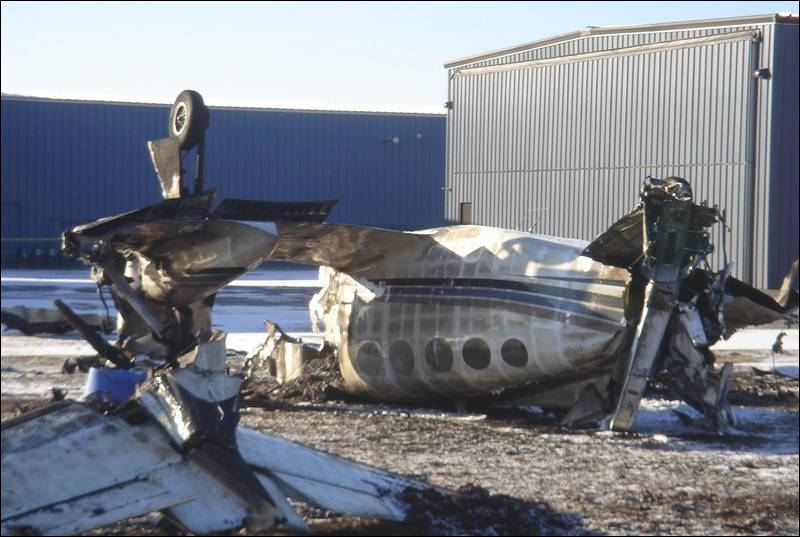
Crash of a Cessna 425 Conquest I in Toliara: 6 killed
Date & Time:
Oct 25, 2006 at 0417 LT
Registration:
5R-MGV
Survivors:
No
Schedule:
Toliara - Antananarivo
MSN:
425-0032
YOM:
1981
Crew on board:
2
Crew fatalities:
Pax on board:
4
Pax fatalities:
Other fatalities:
Total fatalities:
6
Circumstances:
The twin engine aircraft was performing an on-demand taxi flight from Toliara to the capital city Antananarivo with 4 pax and a two pilots on behalf of the company Magrama (Marbres & Granites de Madagascar). Less than two minutes after takeoff, while in initial climb, the aircraft suffered an engine failure and crashed about 1,500 metres from the runway end, bursting into flames. All 6 occupants were killed, among them 4 Italians and 2 Madagascar citizens.
Probable cause:
Loss of control during initial climb after one of the engine caught fire for unknown reasons.
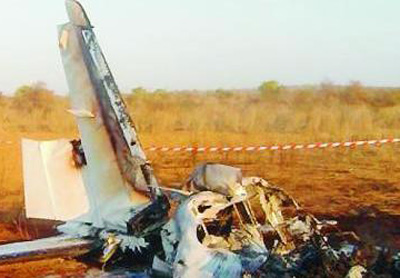
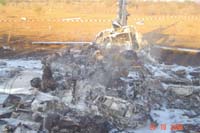
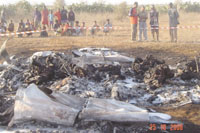
Crash of a Cessna 425 Conquest I in Bozeman: 1 killed
Date & Time:
Nov 29, 2005 at 1742 LT
Registration:
N701QR
Survivors:
No
Schedule:
Algona - Bozeman
MSN:
425-0148
YOM:
1981
Crew on board:
1
Crew fatalities:
Pax on board:
0
Pax fatalities:
Other fatalities:
Total fatalities:
1
Captain / Total hours on type:
1675.00
Aircraft flight hours:
4504
Circumstances:
The airplane was on the final approach segment of an instrument flight rules (IFR) cross country flight that originated approximately 3 hours and 45 minutes prior to the accident when radio communications with the aircraft were lost. The aircraft wreckage was located the following day approximately 2.8 miles from the destination airport. The airplane impacted terrain in a vertical descent and flat attitude and came to rest upright on its fuselage and wings. The cockpit and cabin were intact and both wing assemblies remained attached to the fuselage. Evidence of forward velocity and/or leading edge deformation was not observed to the wings or fuselage. Mixed ice was noted along the leading edge of both wings. At the time of the accident, weather conditions were reported as low ceilings and low visibility due to snow and mist. The accident occurred during dark night conditions. Air traffic control (ATC) transcripts indicated that shortly after entering the holding pattern at 11,000 feet the pilot was issued an approach clearance for the ILS. The pilot acknowledged the clearance and approximately two minutes later ATC communications with the pilot were lost. Pilot logbook records showed that the pilot's total flight time was approximately 1,987 hours. In the six-month period preceding the accident, the pilot logged approximately 40 hours total time, 9 hours of actual instrument time and 7 instrument approaches in the accident airplane. The pilot's total night flying experience was approximately 51 hours. The pilot made no entries in his pilot logbook indicating that he had flown at night in the six-month time frame preceding the accident. Pilots flying the ILS approach prior to the accident aircraft reported mixed icing during the descent and final approach. Post accident examination of the aircraft revealed no evidence to indicate a mechanical malfunction or failure.
Probable cause:
The pilot's failure to maintain airspeed during the approach which resulted in an inadvertent stall. Factors associated with the accident were dark night conditions, clouds, icing conditions, low visibility and snow.
Final Report:
Crash of a Cessna 425 Conquest I in Denver: 4 killed
Date & Time:
Aug 13, 2005 at 2020 LT
Registration:
N425SG
Survivors:
No
Schedule:
Sandpoint - Denver
MSN:
425-0166
YOM:
1982
Crew on board:
1
Crew fatalities:
Pax on board:
3
Pax fatalities:
Other fatalities:
Total fatalities:
4
Captain / Total hours on type:
1450.00
Aircraft flight hours:
4003
Circumstances:
During an ILS approach in night instrument meteorological conditions, the airplane impacted terrain and was destroyed by impact forces and post crash fire. Prior to departure, the pilot obtained a weather briefing, which reported light rain, mist, and instrument meteorological conditions at the destination airport. After approaching the terminal area, the pilot received radar vectors to intercept the localizer for the Runway 35R ILS approach. The pilot's keying of the microphone and the timing of his speech exhibited decreased coordination during the approach phase of flight. After crossing the outer marker and at altitude of 7,700 feet, the pilot asked the controller what the current ceilings were at the airport, and the controller stated 500 feet. With the airplane at an altitude of 6,800 feet, the controller informed the pilot of a "low altitude alert" warning, at which the pilot responded, "Yeah, I am a bit low here." Approximately 20 seconds later, the pilot stated, "I'm back on glideslope." No further communications were received from the accident airplane. The controller issued another low altitude warning, and the radar target was lost. The accident site was located on a hilly, grass field at an elevation of 6,120 feet approximately 2.6 nautical miles from the runway threshold
near the extended centerline of the runway. At 2027, the weather conditions at the airport were reported as wind from 360 degrees at 10 knots, visibility 2 statute miles with decreasing rain, scattered clouds at 500 feet, broken clouds at 1,100 feet, and an overcast ceiling at 2,800 feet. An acquaintance of the pilot, who had flown with him on other occasions, provided limited information about the pilot's proficiency, but stated, "a night ILS in IFR conditions would not be [the pilot's] first choice if he had an option." The pilot's logbooks were not located. The pilot did not hold a valid medical certificate at the time of the accident, and postaccident toxicological test revealed the presence of unreported prescription medications. No anomalies were noted with the airframe and engines. Ground inspection and flight testing of the airport's navigational equipment revealed that the equipment functioned satisfactorily.
near the extended centerline of the runway. At 2027, the weather conditions at the airport were reported as wind from 360 degrees at 10 knots, visibility 2 statute miles with decreasing rain, scattered clouds at 500 feet, broken clouds at 1,100 feet, and an overcast ceiling at 2,800 feet. An acquaintance of the pilot, who had flown with him on other occasions, provided limited information about the pilot's proficiency, but stated, "a night ILS in IFR conditions would not be [the pilot's] first choice if he had an option." The pilot's logbooks were not located. The pilot did not hold a valid medical certificate at the time of the accident, and postaccident toxicological test revealed the presence of unreported prescription medications. No anomalies were noted with the airframe and engines. Ground inspection and flight testing of the airport's navigational equipment revealed that the equipment functioned satisfactorily.
Probable cause:
The pilot's failure to properly execute the published instrument approach procedure, which resulted in controlled flight into terrain.
Final Report:
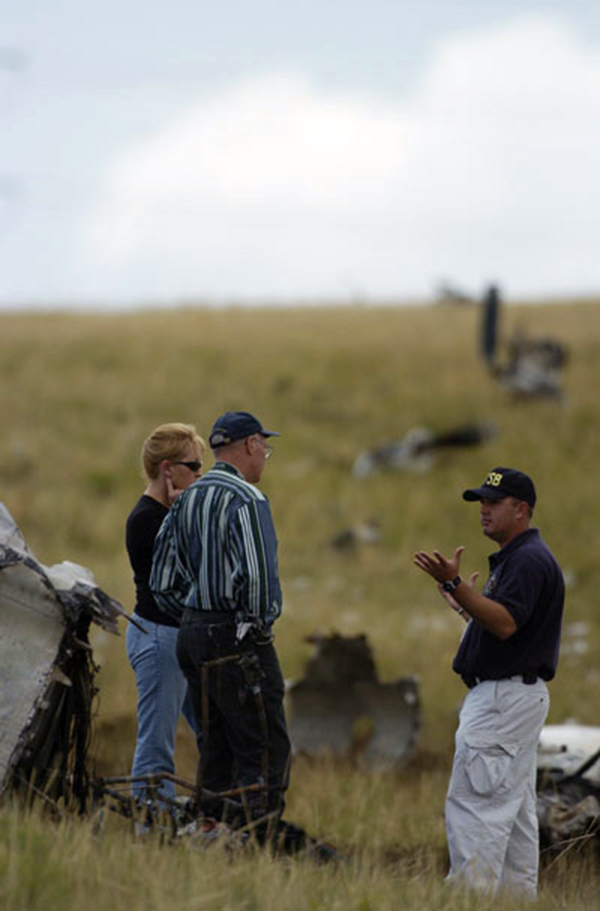
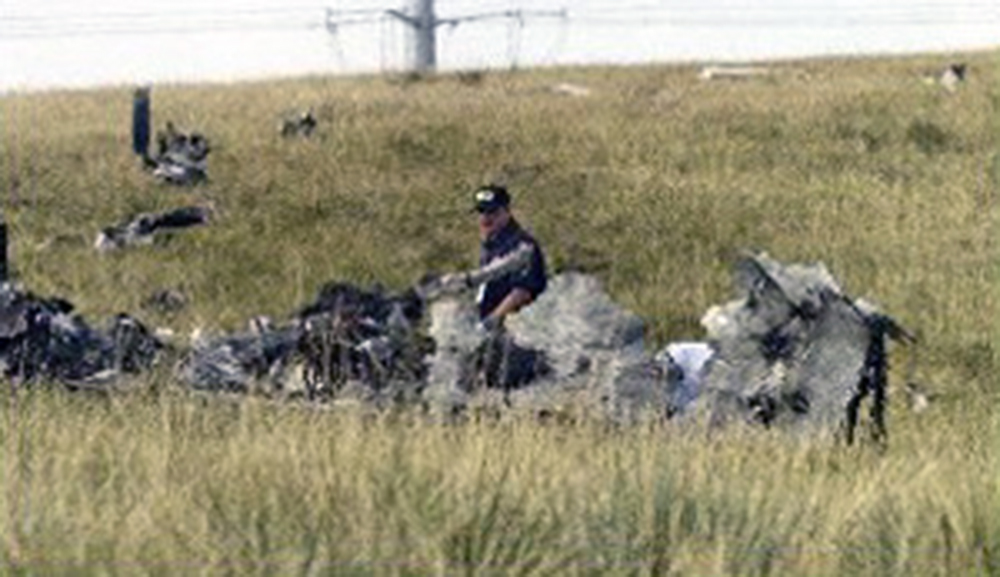
Crash of a Cessna 425 Conquest I in San Jose: 3 killed
Date & Time:
Mar 6, 2002 at 1035 LT
Registration:
N444JV
Survivors:
No
Schedule:
San Jose - La Paz
MSN:
425-0013
YOM:
1981
Crew on board:
1
Crew fatalities:
Pax on board:
2
Pax fatalities:
Other fatalities:
Total fatalities:
3
Aircraft flight hours:
4315
Circumstances:
The aircraft was on an IFR clearance and climbing through a cloud layer when it broke up in flight following an in-flight upset. The weather conditions included multiple cloud layers from 4,000 to 13,000 feet, with a freezing level around 7,000 feet msl. An AIRMET was in effect for occasional moderate rime to mixed icing-in-clouds and in-precipitation below 18,000 feet. As the airplane began to intercept a victor airway, climbing at about 2,000 feet per minute (fpm), and passing through 6,700 feet, the airplane began a series of heading and altitude changes that were not consistent with its ATC clearances. The airplane turned right and climbed to 8,600 feet, then turned left and descended to 8,000 feet. The airplane then turned right and climbed to 8,500 feet, where it began a rapidly descending right turn. At 1034:33, as the aircraft was descending through 7,000 feet, the pilot advised ATC "four Juliet victor I just lost my needle give me..." No further transmissions were received from the accident airplane and the last radar return showed it descending through 3,200 feet at about 11,000 fpm. Analysis of radar data shows the airplane was close to Vmo at the last Mode C return. Ground witnesses saw the airplane come out of the clouds in a high speed spiral descent just before it broke up about 1,000 feet agl. Examination of the wreckage showed that all structural failures were the result of overload. The aircraft was equipped with full flight instruments on both the left and right sides of the cockpit; however, the flight director system attitude director indicator and horizontal situation indicator were only on the left side. The aircraft was also equipped for flight into known icing conditions, with in part, heated pitot tubes (left and right sides), static sources, and stall warning vanes. During the on-scene cockpit examination, except for the pitot heat switches, the cockpit controls and switches were found to be configured in positions consistent with the aircraft's phase of flight prior to the in-flight upset. The right pitot heat switch was found in the ON position, while the left switch was in the OFF position. The left pitot heat switch toggle lever was noticeably displaced to the left by impact with an object in the cockpit. With the exception of the left pitot heat, the anti-ice and deice system switches were all configured for flight in icing conditions. The pitot heat switches, noted to be of the circuit breaker type (functions as both a toggle switch and circuit breaker), were removed from the panel and sent to a laboratory for examination and testing. Low power stereoscopic examination of the switches found that the right switch was intact, while the toggle lever mechanism of the left switch was broken loose from the housing. Microscopic examination of the left switches housing fracture surface revealed imbedded debris and wear marks indicative of an old fracture predating the accident. The broken left switch could be electrically switched by physically holding the toggle lever mechanism in the appropriate ON or OFF position. The electrical contact resistance measurements of the left switch varied between 0.3 and 1.4 ohms, and was noted to be intermittently open with the switch in the ON position. Both switches were then disassembled. While particulate debris was found in both switches, the left one had a significant amount of large coarse fibrous lint-like debris. The flexible copper conductor of the left switches circuit breaker section had several broken strands, and the electrical contacts were dirty. The laboratory report concluded that the left switches toggle was bent to the left in the impact sequence; however, the housing fracture predated the accident and allowed an internal build-up of large coarse fibrous lint-like debris. The combined effects of the broken housing, the resulting misalignment of the toggle mechanism, the dirty contacts, and the large coarse lint debris prevented reliable electrical switching of the device and presented the opportunity for intermittently open electrical contacts. Continuity of the plumbing from the pitot tubes and static ports to their respective instruments was verified. Electrical continuity was established from the bus power sources through the circuit breakers and switches to the heating elements of the pitot tubes and static sources. The heating elements were connected to a 12-volt battery and the operation of the heating elements verified.
Probable cause:
The pilot's loss of control and resulting exceedance of the design stress limits of the aircraft, which led to an in-flight structural failure. The pilot's loss of control was due in part to the loss of primary airspeed reference resulting from pitot tube icing, which was caused by the internal failure of the pitot heat switch. Factors in the accident were the pilot's distraction caused by the airspeed reading anomaly and spatial disorientation.
Final Report:
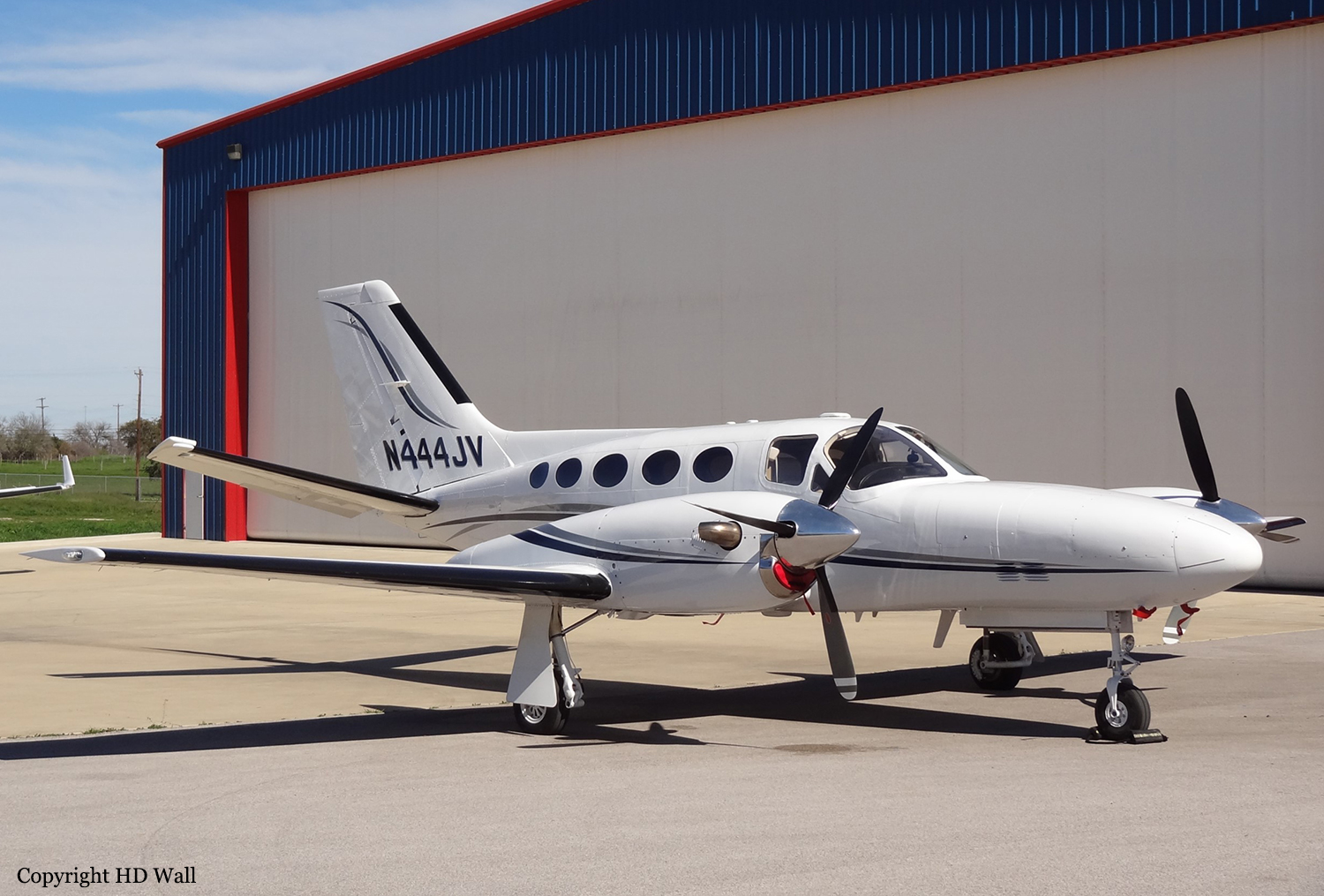
Crash of a Cessna 425 Conquest I in Idaho Falls: 2 killed
Date & Time:
Nov 10, 2000 at 1215 LT
Registration:
N41054
Survivors:
No
Schedule:
Idaho Falls - Idaho Falls
MSN:
425-0172
YOM:
1983
Crew on board:
2
Crew fatalities:
Pax on board:
0
Pax fatalities:
Other fatalities:
Total fatalities:
2
Aircraft flight hours:
4027
Circumstances:
The accident aircraft had recently had maintenance work performed on its autofeather system pressure sensing switches, due to reports of the left engine not autofeathering properly in flight. The purpose of the accident flight was to verify proper inflight operation of the autofeather system following the maintenance work on the autofeather pressure sensing switches and a successful ground check of the autofeather system. Air traffic control (ATC) communications recordings disclosed that the pilot called ready for takeoff from runway 2 approximately 1207, and requested to orbit above the airport at 8,000 feet (note: the airport elevation is 4,740 feet.) The pilot subsequently reported established in a hold above the airport at 8,000 feet approximately 1213, and was instructed by ATC to report leaving the hold. Approximately 1215, an abbreviated radio transmission, "zero five four," was recorded. The Idaho Falls tower controller responded to this call but never got a response in return from the accident aircraft, despite repeated efforts to contact the aircraft. Witnesses reported that the aircraft banked to the left, or to the west, and that it entered a spiral from this bank and crashed (one witness reported the aircraft was flying at 200 to 300 feet above ground level when it entered this bank, and that it performed a "skidding" or "sliding" motion part way through the bank, about 1 second before entering the spiral.) The aircraft crashed about 2 miles north of the airport. On-site examination disclosed wreckage and impact signatures consistent with an uncontrolled, relatively low-speed, moderate to steep (i.e. greater than 22 degrees) angle, left-wing-low impact on an easterly flight path. No evidence of flight control system malfunction was found, and a large quantity of jet fuel was noted to be aboard the aircraft. Post-accident examination of the aircraft's engines indicated that the left engine was most likely operating in a low power range and the right engine was most likely operating in a mid to high power range at impact, but no indications of any anomalies or distress that would have precluded normal operation of the engines prior to impact was found. Post-accident examination of the aircraft's propellers disclosed indications that 1) both propellers were rotating at impact, 2) neither propeller was at or near the feather position at impact, 3) both propellers were being operated with power at impact (exact amount unknown), 4) both propellers were operating at approximately 14º to 20º blade angle at impact, and 5) there were no propeller failures prior to impact. Post-accident examination of the autofeather pressure sensing switches disclosed evidence of alterations, tampering, or modifications made in the field on all but one switch (a replacement switch, which had been installed just before the accident flight during maintenance) installed on the aircraft at the time of the accident. All switches except for the replacement switch operated outside their design pressure specifications; the replacement switch operated within design pressure specifications. Examination of the switches indicated that all switches were installed in the correct positions relative to high- or low-pressure switch installations. Engineering analyses of expected autofeather system performance with the switches operating at their "as-found" pressure settings (vice at design pressure specifications) did not indicate a likelihood of any anomalous or abnormal autofeather system operation with the autofeather switches at their "as-found" pressure settings. Also, cockpit light and switch evidence indicated that the autofeather system was not activated at the time of impact. The combination of probable engine power and propeller pitch on the left engine (as per the post-accident engine and propeller teardown results) was noted to be generally consistent with the "zero-thrust" engine torque and propeller RPM settings specified for simulated single-engine practice in the aircraft Information Manual.
Probable cause:
The pilot-in-command's failure to maintain adequate airspeed with an asymmetric thrust condition, resulting in a loss of aircraft control. A factor was an asymmetric engine thrust condition, which was present for undetermined reasons.
Final Report:
Crash of a Cessna 425 Conquest I near Dar es Salaam
Date & Time:
Jun 12, 2000 at 1815 LT
Registration:
5H-SCB
Survivors:
Yes
Schedule:
Dar es Salaam – Ifakara – Mikumi – Dar es Salaam
MSN:
425-0183
YOM:
1983
Crew on board:
1
Crew fatalities:
Pax on board:
7
Pax fatalities:
Other fatalities:
Total fatalities:
0
Captain / Total hours on type:
123.00
Circumstances:
The twin engine aircraft was engaged in a round trip from Dar es-Salaam to Ifakara, Mikumi and back to Dar es-Salaam, carrying seven passengers and one pilot. While approaching Dar es Salaam at an altitude of 4,000 feet, the right engine failed, followed few seconds later by the left engine. The pilot reduced his altitude and attempted an emergency landing when the aircraft crash landed in a banana plantation located about 20 km from Dar es Salaam. All eight occupants were rescued, among them two passengers were injured. The aircraft was destroyed.
Probable cause:
Failure of both engines in flight due to fuel exhaustion. It was determined that fuel tanks were empty and that the pilot miscalculated the fuel consumption and quantity needed for all trip.

